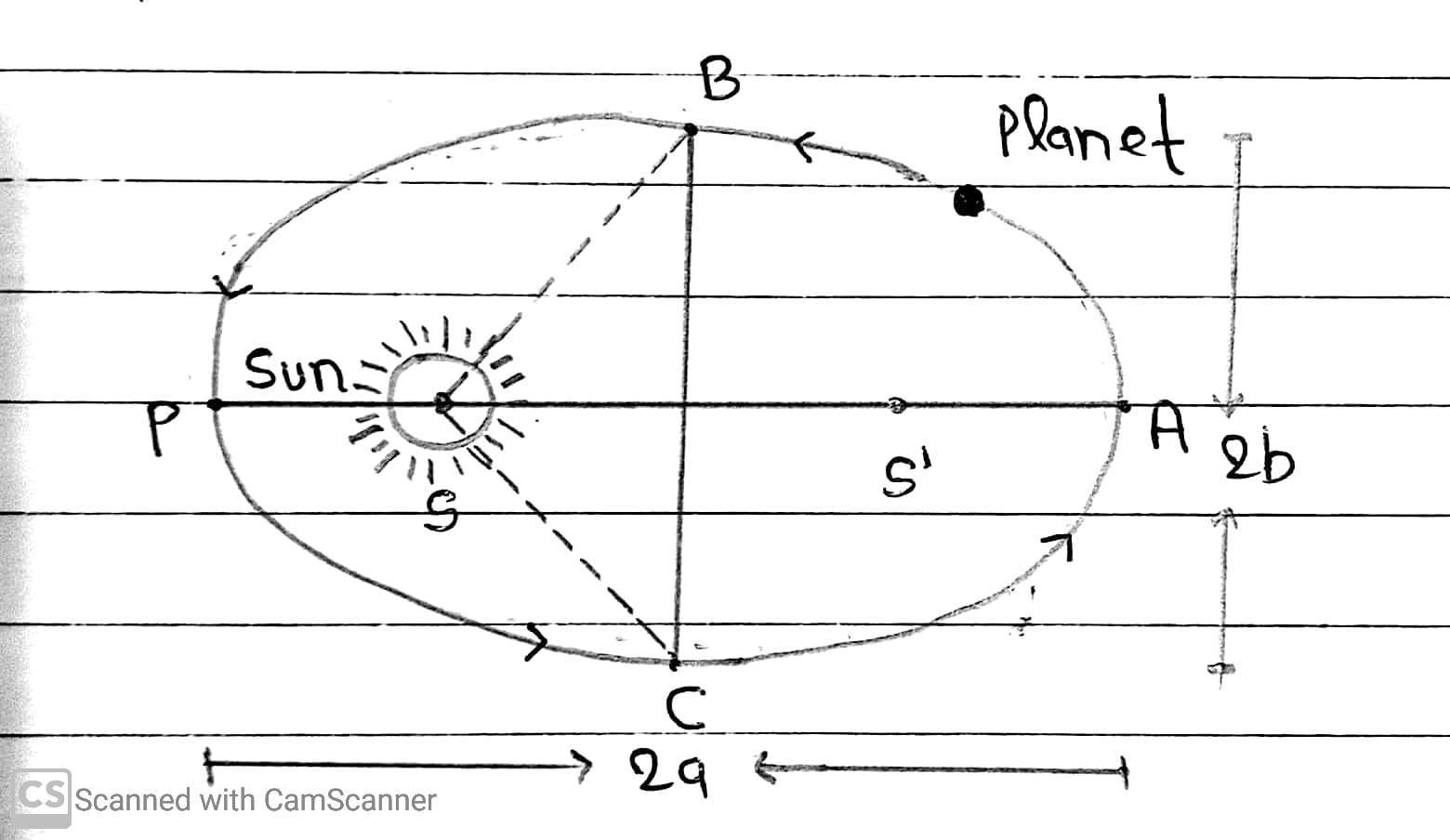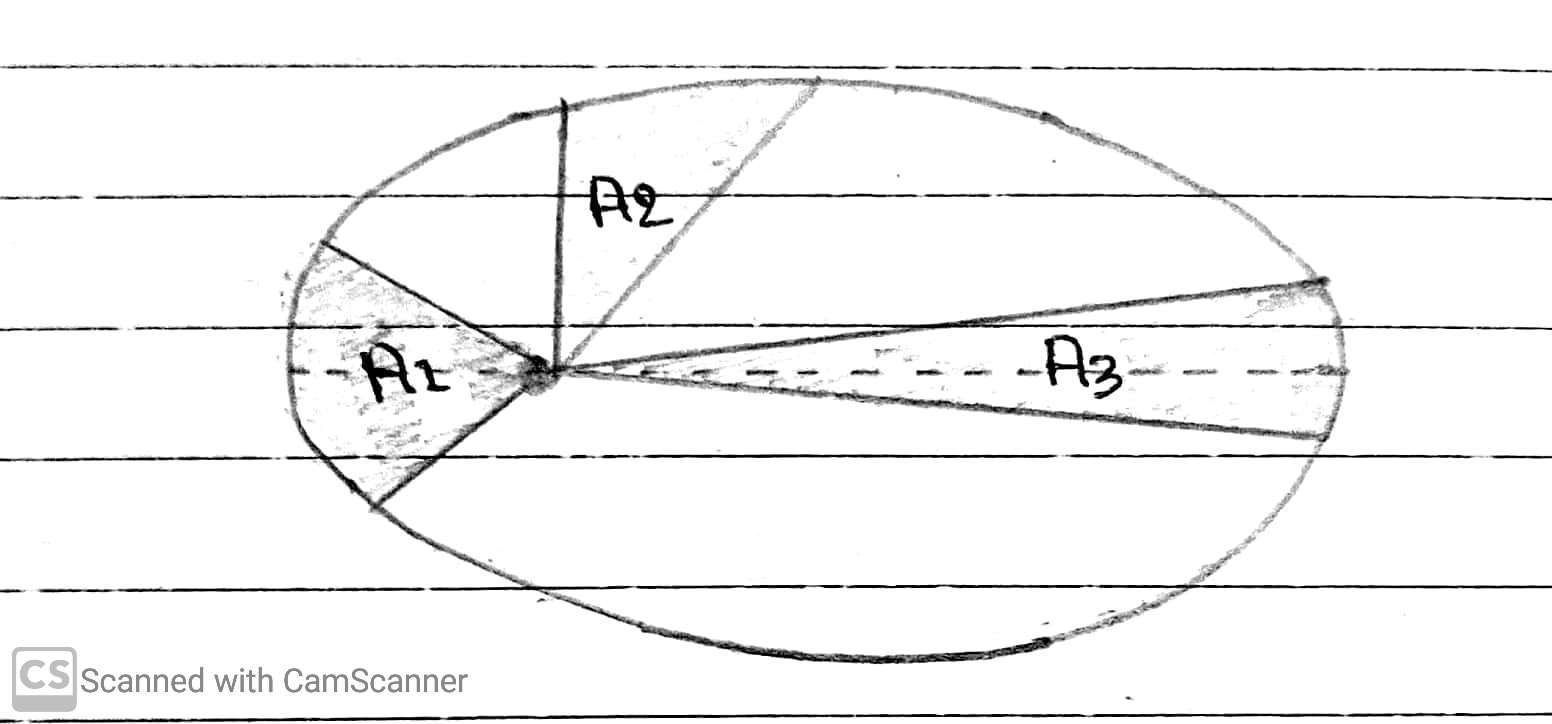Kepler’s law of planetary motion are 3 scientific laws describing motion of planets around the sun.
1. Kepler’s First Law Of Orbits
According to this law, all planets move in elliptical orbits with the sun situated at one of the foci of the ellipse. The ellipse has two foci S the S’, the sun remains at one focus S.

This law identifies that the distance between the sun and the earth is constantly changing as the earth goes around its orbit. The closest is P and farthest point is A. Point P is called perihelion and A is aphelion. The length of major axis (2a) is equal to the sum of the planet-sun distance at perihelion plus the planet-sun distance at aphelion. Half of distance AP is length a of the semi major axis.
2. Kepler’s Second Law Of Areas
According to this law, the speed of planet varies in such a way that the radius vector drawn from the sun to a planet sweeps out equal areas in equal interval of time i.e the areal velocity of the planet around the sun is constant.

The areas A₁, A₂ and A₃ are swept out by the radius vector in equal intervals of time. According to Kepler’s Second law A₁ = A₂ = A₃.
3. Kepler’s Third Law Of Period
According to this law, the square of the time period of revolution of a planet around the sun is proportional to the cube of the semi major axis of its elliptical orbit.
If T is time period of revolution of a planet, then
T² ∝ a³ (I)


NCERT Class 11 Physics Book PDF Free Download
Also Read
SL Arora Class 11 Physics Book PDF Free Download
All In One Arihant Class 11 Physics Book PDF Free Download
